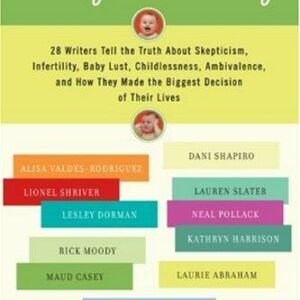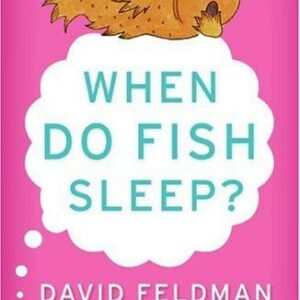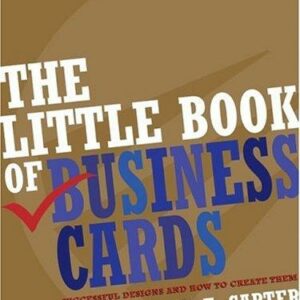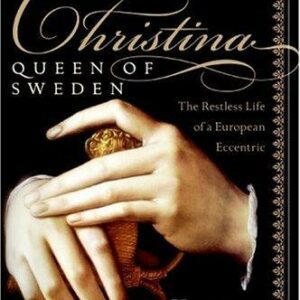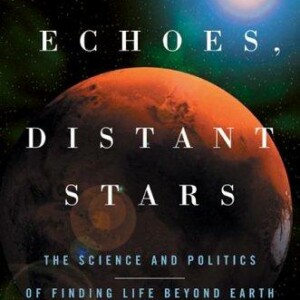The Saturday Night Ghost Club
$17.00
| Title | Range | Discount |
|---|---|---|
| Trade Discount | 5 + | 25% |
- Description
- Additional information
Description
An irresistible and bittersweet coming-of-age story in the vein of Stranger Things and Stand by Me about a group of misfit kids who spend an unforgettable summer investigating local ghost stories and urban legends
“A celebration of the secret lives of children, both their wonders and their horrors . . . Immensely enjoyable, piercingly clever, and satisfyingly soulful.” -Jason Heller, NPR
Growing up in 1980s Niagara Falls – a seedy but magical, slightly haunted place – Jake Baker spends most of his time with his uncle Calvin, a kind but eccentric enthusiast of occult artifacts and conspiracy theories. The summer Jake turns twelve, he befriends a pair of siblings new to town, and so Calvin decides to initiate them all into the “Saturday Night Ghost Club.” But as the summer goes on, what begins as a seemingly light-hearted project may ultimately uncover more than any of its members had imagined. With the alternating warmth and sadness of the best coming-of-age stories, The Saturday Night Ghost Club is a note-perfect novel that poignantly examines the haunting mutability of memory and storytelling, as well as the experiences that form the people we become, and establishes Craig Davidson as a remarkable literary talent.“[Davidson’s] powers of description poetically evoke the magic of youth…The masterful segues between the narratives of child Jake and adult Jake shimmer. And even more profoundly, the book is a celebration of the secret lives of children, both their wonders and their horrors…Immensely enjoyable, piercingly clever, and satisfyingly soulful, Saturday Night Ghost Club is an exquisite little talisman of a book, one that doesn’t flinch as it probes the dark underside of nostalgia.” -Jason Heller, NPR
“This compact novel is reminiscent of Ray Bradbury’s Dandelion Wine and Stephen King’s The Body: dark and unforgettable coming-of-age stories.” -Shelf Awareness
“If you like darkness poured out like molasses from a bucket,you’ll love this novel.”-BookPage
“Davidson makes beautifully clear how the ghoulish tales we feared when we were young can’t compare to the blood-bathed teeth we eventually encounter as adults. The Saturday Night Ghost Club is a tale for those who like their Stranger Things spiked, Stand by Me charred, and who are battered enough yet still brave enough to revisit that moment when made-up horrors finally come to root in a world beyond invention. A novel that both stabs and breaks your heart.” -Mark Z. Danielewski, bestselling author of House of Leaves
“The Saturday Night Ghost Club is not only creepy and chills-down-your-spine fun, it’s also incredibly poignant and heartwarming. This is a tender coming-of-age story that isn’t afraid to face the darkness in the world or meditate on the power of memory and the mysteries of the human brain. Craig Davidson is such a nimble storyteller and his latest novel is proof of his remarkable gift.”-Edan Lepucki, New York Times bestselling author of California and Woman No. 17
“A moving, delightful, thrillingly unexpected coming-of-age story about the irresistible collision of childhood’s dark wonders and adulthood’s haunting mysteries.” -Elan Mastai, author of All Our Wrong Todays
“A delightfully creepy tale of misfits and misadventures, The Saturday Night Ghost Club perfectly captures the ache and wonder of growing up. In this trim, accomplished novel, Craig Davidson sheds brilliant light on the ways that scary stories can not only make us shudder, but can also lead us down unexpected paths and foster our most meaningful connections.” -Matthew Sullivan, author of Midnight at the Bright Ideas Bookstore
“A well-crafted, whimsical coming-of-age tale…Davidson creates a quirky landscape and colorful characters, resulting in a novel that will entertain readers while providing a nice dose of nostalgia.”—Publishers Weekly
“A lovely book that proves how a good storyteller requires only a big heart to resonate with readers. The Saturday Night Ghost Club has a lot of heart, and it carries these characters through every tender page.” –Locus
“Through the intensity of his characters’ experiences, Davidson reconnects us to our own memories of growing up.”—Kirkus Reviews
Craig Davidson has published five other books of literary fiction: Rust and Bone, which was made into a Golden Globe–nominated feature film, The Fighter, Sarah Court, the Scotiabank Giller Prize–nominated Cataract City, and Cascade. Davidson is a graduate of the Iowa Writers’ Workshop, and his articles and journalism have been published in Esquire, GQ, and The Washington Post, among other places. He lives in Toronto, Canada, with his partner and their child. He also publishes bestselling horror fiction under the pseudonym Nick Cutter.QUESTIONS AND TOPICS FOR DISCUSSION
1. Two epigraphs introduce the story: “The Brain” by Emily Dickinson and a quote from Ann-Marie MacDonald (“Memory is another word for story, and nothing is more unreliable”). How do the epigraphs set up the relationship between the reader and the narrator of the story? Should the reader trust the narrator?
2. The novel begins by introducing the perspective of our narrator Jake, an adult neurosurgeon. Why do you think the author chose to tell the story through Jake’s adult eyes? What do we learn from his stories about brain surgeries?
3. The Saturday Night Ghost Club very clearly takes place in the 1980s, with references to Betamax, The Goonies, and Carrie, as well as stylistic influences of ’80s touchstones like Stand By Me. How does this setting affect the story and the experience of reading it? Why do you think ’80s nostalgia is so popular today?
4. How is Jake’s relationship with his father different from his relationship with his uncle?
5. Why does Uncle C ask Jake to keep the Saturday Night Ghost Club a secret from his parents?
6. What is the role of Cataract City in the novel? How is it different for someone like Jake, whose whole family history is there, as opposed to the Yellowbirds?
7. In the beginning of “The Screaming Tunnel,” grown-up Jake tells the reader about an eight-year-old girl with a tumor that keeps growing (pages 57–59). The girl is unable to stay awake and creates a dreamworld called Jupita, in which she spends her last days with a robot and a druid. Before the girl dies, she paints the robot and the druid, which look exactly like her parents. Why does Jake decide to tell his readers this particular story? How does this story relate to his Uncle C?
8. Jake describes the last time he was truly scared: “I was scared—with that crystalline, childish fear of being caught and punished. That fear thrashed behind my rib cage like a bird in cupped hands, perhaps the last truly childlike instance of that emotion I’d ever feel. That fear is a kind of magic” (page 173). What does he mean by this? How else are magic and fear connected in the novel?
9. Jake is described throughout the text as squeamish around blood and death. Why do you think he decides to become a neurosurgeon?
10. How does Jake ultimately view memory and the brain? Do you agree?
11. Dove tells Jake to “Never wake the dreamers from their dream” (page 169) and later in life she sculpts a piece called Never Wake the Dreamer (page 202). Do you agree with Dove’s sentiment and Jake and his family’s decision to keep Uncle C in the dark about his past?
12. Once you know how Calvin’s backstory has shaped the events of the summer, can you identify how each meeting of the Saturday Night Ghost Club applies to his past?
13. It is clear that Jake views the summer of the Saturday Night Ghost Club as pivotal to his character. Does he revisit that summer out of regret, guilt, or something else? Why is he telling us this story?
14. Jake eventually reveals that he has recounted the events of the novel as he chooses to remember them. What does this mean? Can you think of any places he might have altered his memories? Are there any formative experiences that you have reshaped in telling stories over the years? How and why?
15. “This city is haunted by ghosts,” Calvin says (page 25). For much of the novel, it is unclear whether or not there are real paranormal presences. Were you satisfied with the resolution to this? Would you ultimately consider this book a ghost story?
16. This novel is unique in the way it shows the complex experiences of adults and children side by side. How do the children and adults in this novel process emotions and experiences differently?
17. The novel ends with Uncle C introducing Jake’s son to the ghost and the occult as he once did for Jake. How does that scene make you feel?
1.
MONSTERS
Most people believe the human brain is solid. They imagine a loaf of bread soaked in gelatin: you can hack off quivering slices, same as you would with a Jell-O mold at a family picnic. But the truth is, the brain’s texture is more like toothpaste. Brain matter will squeeze through a keyhole. In cases of severe cranial swelling, surgeons use a drill-I prefer the RA-II, a Korean model: 30,000 rpm, with silicone handgrips for comfort-to bore into the skull. If the swelling cannot be stopped, the living brain will project from the hole in an inverted funnel. This is called a “coning,” and it marks an end.
Most people also believe the brain is gray. Its cells are called gray matter, after all, and isn’t that how the organ looks in horror flicks: a slaty walnut floating in a jar of formaldehyde in some mad scientist’s lab? But a sheathed brain is bracingly pink. The tissue only turns gray once the cerebrospinal sac has been perforated, once the air hits it. When a brain cones, the tissue changes color; traceries of ash thread through that bubblegum pink as a million thoughts flicker and die.
People think neurosurgeons cut into brains with a scalpel. Another myth. How can you carve toothpaste? An infant’s brain matter is even less substantial than an adult’s, like pancake batter. I operate with a sucker wand, a tool that is exactly as it sounds. As I investigate the runnels of a patient’s brain, it grips me that something unforgivingly solid-my wand-is moving through something ephemeral, dreamlike: a patient’s memories. Though I work carefully and with a keen knowledge of the cerebral topography, my wand remains a beast blundering through fields of budding shoots. If I trample something critical, the patient may awaken lacking a vital memory. That one where they gazed into the sky as a child wondering how a star might taste, settling on breathtaking wintergreen. The smell of their newborn daughter’s scalp, or that haunting tingle on their lips following their first kiss.
I navigate the storerooms of a patient’s consciousness, passing memories in their golden vaults, my wand clumsily bayoneting-it often seems-the pink jelly that holds everything the patient is or will ever be. Hard as I try not to disturb the furniture, things happen. I am forced to accept these tragic outcomes for the same reason that the patients on my table must accept their own lot: we are only human, a condition of perpetual uncertainty and failure.
The brain is the seat of memory, and memory is a tricky thing. At base level, memories are stories-and sometimes these stories we tell allow us to carry on. Sometimes stories are the best we can hope for. They help us to simply get by, while deeper levels of our consciousness slap bandages on wounds that hold the power to wreck us. So we tell ourselves that the people we love closed their eyes and slipped painlessly away from us. That our personal failures are the product of external forces rather than unfixable weaknesses. That we were too damn good for the rat-assed bastards who jilted us, anyway. Tell yourself these stories long enough and you will discover they have a magical way of becoming facts.
But a secret can be hidden from everyone save its holder, and the brain is not only a storyteller, it is a truth-seeking organ. If the stories we tell are no more than an overlay, the equivalent of six feet of caliche covering a pool of toxic sludge, something’s bound to bubble up, right? And the most awful truths will do so in the darkest hours of night, when we’re most vulnerable.
If you bury those secrets so deep that you forget they ever happened, okay, maybe you’ve beat the devil. But the truth is a bloodhound. That’s something I can tell you with certainty. The truth is that abandoned dog following you over sea and land, baying from barren clifftops, never tiring and never quitting, forever pining after you-and the day will come when that dog is on your porch, scratching insistently at your door, forcing you to claim it once again.
i.
As a boy, I believed in monsters.
I was convinced that if I said “Bloody Mary” in front of a mirror, a hideous witch-woman would reach through the glass with nails sharp as splinters. I considered it a fact that the Devil lingered at shadowy crossroads and went to dance halls in disguise, where he’d ask the prettiest girl to dance and reel her across the floor while spectators stood terror-stricken at the sight of the Devil’s goatish shanks, until the girl fainted dead away and the Unclean One vanished in a puff of brimstone.
There was no falsehood I wouldn’t swallow, no quilt of lies you couldn’t drape over my all-too-gullible shoulders. But for a boy like me-chubby, freckled, awkward; growing up in a city where the erection of a new Kmart occasioned our mayor to announce, “This marks a wondrous new chapter in our town’s history”-imagination was my greatest asset. Not to mention my defense against a foe worse than the most fearsome monster: loneliness.
My ally against that foe was my uncle Calvin. If I told him there was a bottomless pit in my basement, he’d say, “Tell me, Jake, is the air denser around the mouth of the pit than in other areas of the basement?” Cocking an eyebrow: “Do ominous growling sounds emanate from this pit of yours?”
Uncle C was the ideal nursemaid for my paranoid fantasies. His knowledge of urban legends and folklore was encyclopedic-with the added bonus that he seemed to consider most of it true.
“Hey,” he’d say, “did you know there are crocodiles living in the sewers of our fair city? The poor suckers get smuggled up from Florida by dumb tourists. Sure, they’re cute as a bug’s ear when they’re six inches long. But when they grow up and get nippy? Ba-whooosh, down the porcelain mistake eraser. They get fat ‘n’ sassy down there in the pipes, where there’s plenty to eat if you’re not choosy. Every year a couple of sanitation department workers get gobbled up by sewer crocs. The press bottles it up, unscrupulous snakes that they are, but it’s a fact you can set your watch to.”
Uncle C would fiddle with the beads of his bracelet-each an ornate pewter Cthulhu head, mouths and eye sockets sprouting tentacles-and offer a wistful sigh. “And that, Jake, is why owning a pet is a big responsibility.”
Once, when I was six or seven, I became convinced a monster lived in my closet. I told my dad, who did what 99 percent of adults do when their child makes this claim: he flung my closet door open, rattled coat hangers and shoved shoeboxes aside, making a Broadway production of it. “See? No monsters, Jake.”
But monsters make themselves scarce when adults are around, only to slither back after dark. Every kid knew this to be an unshakable fact.
Uncle C arrived for dinner that night, as usual-Mom invited him every Sunday. He got an inkling of my worry as I sat picking at my Salisbury steak.
“What’s the matter, hombre?”
“We have an unwanted visitor in a closet, apparently,” Mom informed him.
“But we’ve established that there’s no monster,” my father said. “Right, buddy?”
“Ah,” said Uncle C. “I have some expertise in this area. Sam, with your permission?”
Mom turned to my father and said, “Sam,” in the tone of voice you’d use to calm a jittery horse.
“Of course, Cal, as you like,” my father said.
My uncle pedaled home to his house, returning ten minutes later with a toolbox. Once we were in my bedroom he motioned to the closet. “I take it this is its lair?”
I nodded.
“Closets are a favorite haunt of monsters,” my uncle explained. “Most are harmless, even good-tempered, if they have enough dust bunnies and cobwebs to eat. Do you clean your closet?”
I assured him that it was hardly ever tidied unless my mother forced the chore on me.
“Good, let them feast. If they get too hungry they’ll crawl over to your clothes hamper and eat holes in your underwear. No need to check the seat of your drawers for confirmation, as I can see by your expression that yours have indeed met this cruel fate.”
Calvin cracked the toolbox and pulled out an instrument-one that today I’d recognize as a stud finder.
“It’s a monster tracer,” he said, running it over the closet walls, making exploratory taps with his knuckles. “There are token traces of ectoplasm,” he said in the voice of a veteran contractor. “Monster slime, in layman’s terms. What does this monster look like?”
“Hairy in some parts, slimy in others.”
“What’s its shape? Like a snake, or a blob?”
“A blob. But it can stretch, too, so it can look like a snake if it wants.”
“We’re dealing with a hairy, slimy blob with uncanny stretching capacities.” He gripped his chin. “Sounds like a Slurper Slug. They’re common around these parts.”
“A slug?”
“Correct, but we’re not talking your garden-variety slug.” He laughed-actually, he exclaimed ha-ha. “A little paranormal humor for you, Jake my boy. These peculiar and particularly gross slugs infest closets and crawl spaces. You haven’t been keeping anything tasty in your closet, have you?”
“That’s where I put my Halloween candy.”
“Slurper Slug, then, guaranteed. They’re not dangerous, just revolting. They could make a mortician barf his biscuits. If you let one hang around he’ll call his buddies and before long you’ve got an infestation on your hands.”
He rooted through his toolbox for a pouch of fine red powder. “This is cochineal, made from the crushed shells of beetles. It’s used in containment spells.”
He laid down a line of powder in the shape of a keyhole:
“This,” he said, pointing to the circle, “is the trap. The Slurper Slug will traipse up this path, see, which gets narrower and narrower until the slug gets stuck in the Circle of No Return. There it will turn black as night and hard as rock. Now, you’ll have to pull one hair out of your head to bait the slug trap.”
I plucked a single strand, which my uncle laid softly in the trap.
“Go ask your mom if she has any chocolate chips.”
I went down to the kitchen to find my folks engaged in a hushed conversation. My father’s shoulders were vibrating like twin tuning forks.
“Chocolate chips, huh?” Mom said in a Susie-Cheerleader voice. “I’ve only got butterscotch.”
By the time I got back, the closet was shut. My uncle instructed me to lay a trail of butterscotch chips along the door.
“The sweetness will draw that slug out of hiding. Now listen, Jake, and listen carefully. If you peek inside the closet, the spell will be broken. Under no circumstances can it be opened until tomorrow morning. No matter the sounds you may hear dribbling through this door, you must leave it closed. Do you swear this to me?”
“Yes, I promise.”
“By the Oath of the White Mage, do you swear it?”
When I admitted I didn’t know that oath, he stuck out his little finger. “The pinkie variety will suffice.”
I linked my finger with his and squeezed.
“Cross your heart and hope to die?”
“Stick a needle in my eye,” I said solemnly.
I awoke to sunlight streaming through the window. I crept to the closet and opened it. Just as Uncle C had said, the keyhole was now only a circle and in the middle sat an object that was dark as night and hard as rock.
My uncle was taking off his boots in the front hall when I stormed downstairs.
“The trap worked!” I told him, dragging him up the stairs to show him the blackened slug.
“Pick it up,” he said. “It may still be a little warm but it won’t burn you.”
Queasy warmth pulsed off the slug, or so it felt to me.
“It’s not every day that you can hold a monster in your palm, is it, Jake?”
That lump of obsidian would rest on my nightstand for years. Then one day I noticed it sitting between my Junior Sleuths magnifying glass and a dog-eared reissue of Stephen King’s Carrie, the one with the art deco cover. Opening the drawer, I swept the volcanic rock inside, embarrassed that I’d once been fear-struck by anything so infantile as a snot-ball slug in my closet. . . .
An hour later I took it out and put it back where it belonged.
2.
THE SPIRIT PHONE
What follows is an account, as I choose to remember it, of my twelfth year on this planet-the summer of the Saturday Night Ghost Club. Uncle C called the inaugural meeting, and in addition to him, our membership roll was tiny: Billy Yellowbird, Lexington Galbraith, and me. Later on, Dove Yellowbird became the club’s lone female member.
The club convened in Niagara Falls. Cataract City, as we locals call it. A place stuck in time. The shop awnings are ’70s-era candy-stripes, and the row houses have tarpaper roofs. The rooms in every motel down the strip-flops with names like the Lovers’ Nest and the Honeydew Inn-smell of burned dust and carpet powder, and the duvets look like somebody’s grandma’s sofa covers. Nothing ever gets torn down in Cataract City. Buildings collapse like woolly mammoths sucked lamenting into a tar pit, and afterward, the spot where that dilapidated house or shop stood remains barren. In most towns, things change. Vacant lots become parking lots, or gentrification hits and they become tapas restaurants and dog grooming salons. But where I come from those weedy lots become part of the scenery. People would miss them if they were gone.
Cataract City is perma-tacky, but you come to love it the way you’d love an ugly dog with a sweet disposition. The population swells when the tourist tide washes in each summer-that spree-spending, sunburned horde-but they clear out come late August, leaving nothing but their money. Just enough babies are born at the Niagara Gen to compensate for those who are lost in the retirement castles strung down Dunn Street. A lot of the guys I grew up with roam the streets they were born on, living a block from their childhood homes. Cradle to grave could be Cataract City’s unofficial motto. Some days I peer out the window of my glittery Toronto apartment tower-everything glitters in my part of town; at the first sign of tarnish the wrecking ball starts to swing-and spot that distant landfall across Lake Ontario. The city of my birth is only a few hours down the highway if traffic holds steady, and a part of me will always belong there.
US
Additional information
| Weight | 5.6 oz |
|---|---|
| Dimensions | 0.5500 × 5.0100 × 7.6800 in |
| Imprint | |
| ISBN-13 | |
| Author | |
| Audience | |
| BISAC | |
| Subjects | ghost story, Summer reads, family drama, haunted, nostalgia, growing up, ghost stories, actor gifts, novellas, horror fiction, horror novels, haunted house, coming of age novels, books for men best sellers, mens gifts ideas, short novels, craig davidson, the saturday night ghost club, millenial gifts, canadian writers, Nick Cutter, canadian novels, supernatural, childhood, small town, ghost, Ghosts, horror, Halloween, drama, FIC066000, fiction, paranormal, occult, Friendship, memory, coming of age, novels, beach reads, bullying, doctor, FIC012000, 1980s |
| Format |




